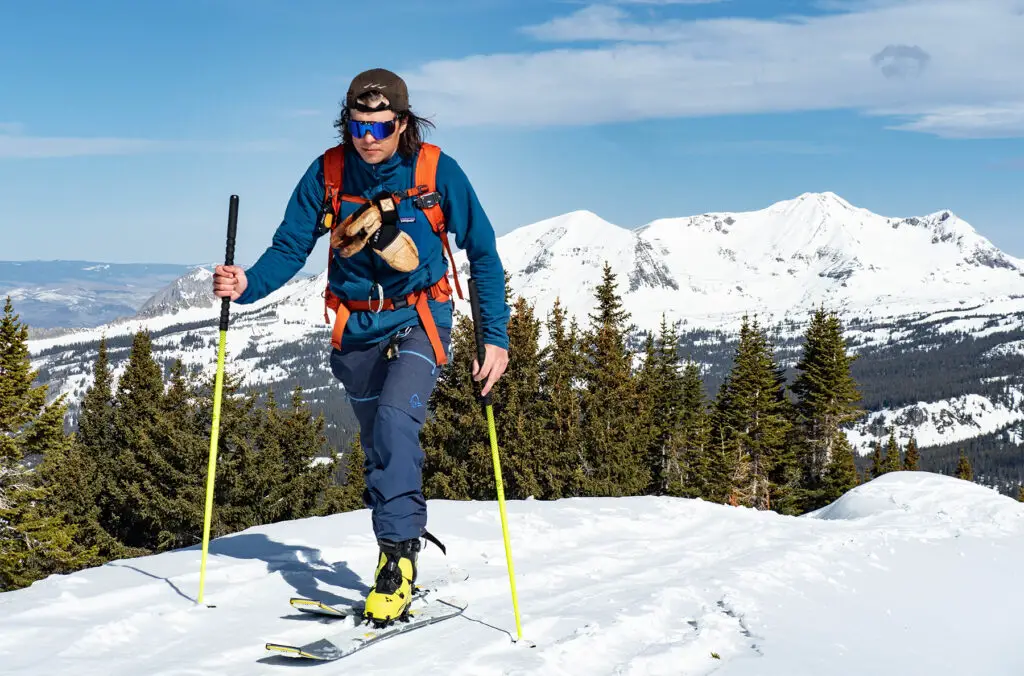Introduction to Zuschneidfelle
If you’ve ever dipped your toes into ski touring, you know there’s one piece of gear that’s absolutely non-negotiable — skins. And in the German-speaking ski world, “Zuschneidfelle” is the magic word. They’re the custom-cut skins that make your uphill climbs possible without sliding backwards. In other words, they’re your ticket to adventure when the chairlift’s not part of the plan.
What Are Zuschneidfelle?
At their center, Zuschneidfelle are climbing skins that you simply cut to coordinate the precise shape and measure of your skis. Unlike pre-cut skins, they arrive in a longer and wider format, letting you trim them for a perfect fit.
Origin of the Term
The word breaks down into “zuschneiden” (to cut) and “Felle” (skins). Historically, these were actual animal skins — mostly seal — used by mountain travelers to gain traction on snow. Thankfully, today’s versions are synthetic or mohair blends, cruelty-free, and way more efficient.
How Zuschneidfelle Differ from Regular Skins
Regular skins may come pre-trimmed, but Zuschneidfelle give you the flexibility to create that ideal ski-specific shape. This implies superior hold, more surface scope, and made strides execution on soak climbs.
Why Zuschneidfelle Are Essential for Ski Touring
If ski touring is a cake, Zuschneidfelle are the baking powder — you can’t make it rise without them.
Grip and Glide Balance
The genius of Zuschneidfelle lies in their dual personality: they grip the snow when you push down but let you glide forward when you slide. It’s like having winter tires with a turbo boost.
Adaptability to Various Skis
Whether you’ve got skinny mountaineering sticks or fat powder boards, Zuschneidfelle adapt.That’s why they’re cherished by both snow capped competitors and end of the week warriors.
Types of Zuschneidfelle
Mohair Zuschneidfelle
Made from the hair of Angora goats, mohair skins are light, quick, and perfect for dry, cold snow. They’re like the sports cars of climbing skins — sleek and speedy.
Synthetic Zuschneidfelle
Built from nylon, these skins are durable and offer stronger grip. Perfect for wetter, icier conditions, they’re the SUVs of the ski world.
Mixed Material Zuschneidfelle
A mix of mohair and nylon gives you the most excellent of both universes - better than average coast, solid grasp, and strong strength. Think of them as crossover cars for the slopes.
How to Select the Proper Zuschneidfelle
Ski Length and Width Contemplations
Always select skins longer and more extensive than your skis so you’ll be able cut them down. It’s like buying texture – you’ll continuously trim additional fabric, but you can’t include more.
Snow Conditions and Terrain
If you mostly tour in cold, powdery conditions, mohair is your friend. If you’re in mixed or wet climates, synthetic or mixed blends will serve you better.
Frequency of Use
Every day skiers ought to contribute in solid, high-quality skins. In case you’re more of a “three-trips-a-year” sort, budget-friendly alternatives can still get the work done.
Step-by-Step: How to Cut Zuschneidfelle to Fit Your Skis
Tools You’ll Need
Zuschneidfelle kit
Skin cutter (or sharp utility knife)
Marker pen
Ski vise or a steady surface
Measuring and Marking
Lay the skins glue-side down on your skis, center them, and stamp where you would like to trim. Make sure they cover the base edge-to-edge without overlapping onto the metal edges.
Cutting and Trimming Tips
Trim one side to begin with, at that point reposition for the other side.The goal is to expose a sliver of metal edge for turning grip but keep full coverage for traction.
Caring for Your Zuschneidfelle
Cleaning After Use
After a tour, let them dry away from direct heat. Wipe off ice or snow to prevent glue contamination.
Proper Storage
Roll them glue-to-glue or utilize a work skin saver. Store in a cool, dry place — think “wine cellar vibes,” not “hot car in July.”
When to Reapply Glue
If they stop sticking, it’s time for a reglue. You can DIY this with skin glue sheets or take them to a shop for professional help.
Common Botches to Maintain a strategic distance from
Cutting too narrow and losing grip
Storing them wet (hello, mildew!)
Overheating them near a fire or heater
Ignoring glue contamination from dirt
Where to Buy Zuschneidfelle
Online Stores
Big outdoor retailers like Bergfreunde, Sport Conrad, or Backcountry stock multiple brands and types.
Local Outdoor Shops
In the event that you need exhortation custom-made to your ski fashion, nothing beats chatting with a nearby master who knows the territory you’ll be handling.
Price Range and Esteem for Cash
Expect to spend between €100–€200 for quality Zuschneidfelle. While the price might sting, remember — good skins can last for years with proper care.
Conclusion
Zuschneidfelle might appear like fair another piece of adapt, but they’re really the mystery sauce to fruitful ski visiting. With the correct fit, fabric, and care, you’ll coast tough like a master and still have vitality to appreciate the downhill ride.
FAQs
1. Can I use Zuschneidfelle for splitboarding?
Yes! There are specific versions for splitboards, and the trimming process is similar.
2. How long do Zuschneidfelle last?
With proper care, anywhere from 3–5 years — even longer if you’re gentle on them.
3. Do Zuschneidfelle work on icy slopes?
They work best on snow, but for icy slopes, pairing them with ski crampons adds safety.
4. Can I cut Zuschneidfelle myself or should I go to a shop?
If you’re handy, you can absolutely DIY. Most kits come with a trimming tool.
5. What’s the biggest mistake when trimming Zuschneidfelle?
Cutting them too narrow — you’ll lose valuable grip and curse every uphill section.

